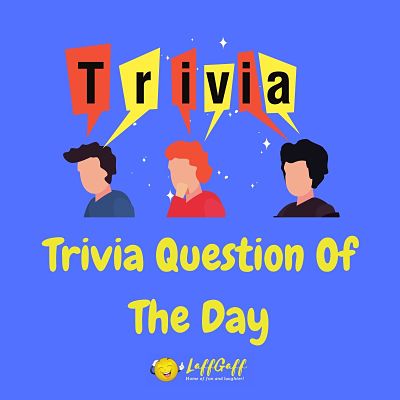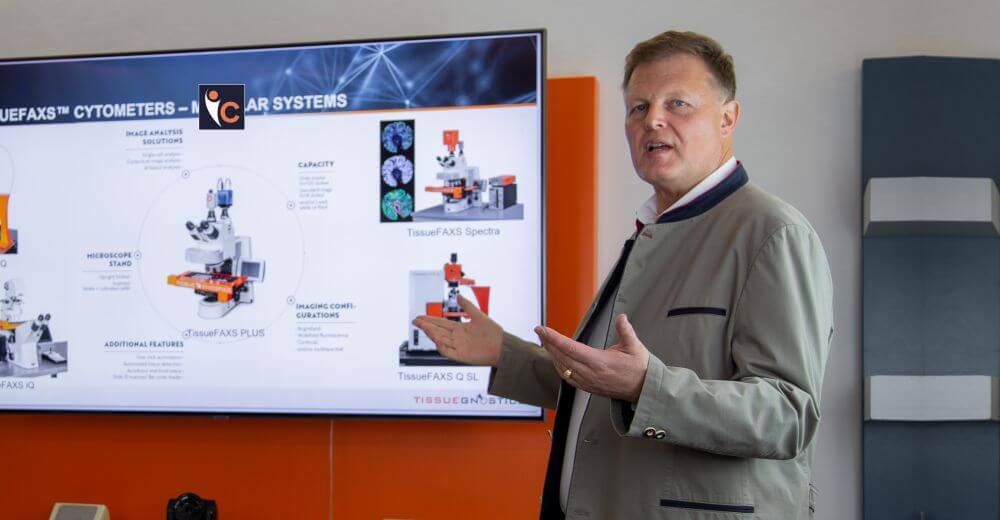Understanding the biology or function of an organ requires a detailed assessment of various cells and structures in the intact tissue environment –to understand their state, a measurement of the number and characteristics of cells is required. It often involves varying unanswered questions that require high-level intelligence, attention to detail, and advanced computer assistance to process and make useful meaning of available data.
TissueGnostics GmbH (TG) develops instruments and software at the frontiers of automated microscopy and tissue cytometry, which change the way that scientists and clinicians seek knowledge on cells in different tissues and diseases. When approaching microscopy, even experts are often challenged by the profound knowledge of its manifold techniques and technologies required to yield precise results. But TissueGnostics GmbH is one step ahead in this matter as it understands that not every user, or researcher, may know microscopic methods to their core. Thus, it provides a platform solution of tissue cytometers, for every clinician or researcher to attain accuracy and performance.
Under the commendable leadership of Dr. Rupert Ecker, the CEO, and the family-like team of experts at TissueGnostics, they pioneered the manufacturing of tissue cytometers that offer a flow cytometry-like workflow that is applied to tissue sections, for better assessment, understanding, and increased verifiable results.
From its inception, Dr. Rupert Ecker, had a keen desire for biomedical researchers to improve their scientific knowledge in microscopy. Thus, he designed TG’s product platform based on the motto ‘Precision that inspires,’ which allows scientists to conduct operations as follows:
- Whole-slide imaging (brightfield, fluorescence, confocal, multispectral)
- High-end analysis of tissue sections, biopsies, cultured cells, TMAs, smears, etc.
- Spatial phenotyping, single-cell analysis, molecular single-cell profiling, machine-learning-based tissue classification, and many more.
Let’s learn more about TissueGnostics and how it is contributing to advancing research on cells and tissues.
The origination of the Company: TissueGnostics
The student Rupert Ecker was pursuing his Master’s studies when he began using methods of microscopy and image analysis and elaborated on these technologies during his Ph.D in the lab of Georg Steiner and his PhD supervisor Prof. Michael Marberger at the Department of Urology in Vienna, Austria. There, he realized that many researchers were used to generate data with a variety of methods – such as flow cytometry, ELISA, Northern/Southern/Western blotting, and even mass spectrometry – but when it came to microscopic images, they just wanted a ‘nice picture’ for their publication.
But microscopy is much more than an ‘expensive lens’ of a camera. Microscopy is a collection of versatile methods for the generation of scientific data, whereby images have to be considered raw data! To extract numerical data and real knowledge from ‘nice images,’ researchers nowadays have to apply appropriate methods of image analysis, including techniques of the machine and deep learning.
What started as an academic endeavor for Rupert Ecker soon revealed its potential for use in biomedical research on the broadest scale and clinical applications as well, also showing a substantial commercial value. With the first patents granted, Rupert Ecker being the co-inventor, had to decide how he and his colleague wanted to finance global patents, i.e., either by licensing them out or by commercializing the idea themselves. But without a source of funding, they would have had to stop the endeavor right away. Thus, the inventors decided on the latter, and this way, TissueGnostics was founded in April 2003.
Core Mission, Vision and Values
TissueGnostics has been a trendsetter from the first moment on and aims to remain at the frontiers of automated microscopy and tissue cytometry, a field requiring high precision and performance, and supply its solutions to every researcher and clinician working with tissue sections and/or cell cultures in 2D, 3D, or 4D.
While microscopy involves a manifold of techniques and technologies, it certainly requires the user to have a profound knowledge of those, to obtain feasible results. Thus, TissueGnostics acts as a translator by providing high-level solutions to users who are not experts in the field of microscopy and/or image analysis. This is done through its technology platform of tissue cytometers.
Unique Products and Services
When it comes to microscopy, there are many different scientific questions around tissue cytometry—which require automation and computer-assisted data processing. The vast majority of the human body consists of solid tissues i.e., cell agglomerations that appear in an orderly manner concerning the spatial organization, but follow different organizational principles and structural patterns. That is why all known life forms consist of different tissues and we are also confronted with very different forms of diseases.
Providing solutions for automated microscopy and image analysis, which allow addressing variable questions in a manifold of cells, tissues, markers, staining methods and diseases, all based on an enormous biological variability, is a challenging task. It is the task that TissueGnostics not only took up but matches and adheres to! It is the very reason why its motto is ‘Precision that inspires.’
With the company’s product lines TissueFAXS, which is a microscope-based open research platform, and the new COLUBRIS – Tissue Cytometer with AI, TissueGnostics offers a solution for virtually any question around cells in tissues, whole slide imaging (WSI), and the spatial distribution of cells in those tissues.
Innovations in Research & Development at TG
TissueGnostics has been founded out of a research need that was largely identified by the founders. The main drivers of innovation in TissueGnostics are (1) the team members having a scientific background, like the founders themselves, (2) feedback from users, who are all researchers in the field of biomedicine, and (3) collaborative projects with academia.
These collaborative efforts—i.e., projects with academia—form a constitutive element of TissueGnostics’ success. In addition to more than 20 Austrian national collaborative research projects, TissueGnostics has been an industry partner to six major EU-founded Marie Skłodowska-Curie Innovative Training Networks (ITN)/Doctoral Networks and additional EU programs, such as COST Actions and other Framework 6, 7, HORIZON 2020 and HORIZON EUROPE programs.
An important aspect for TG’s R&D department is the fact that microscopy as such is a largely unregulated area of technology, and the same is true for image analysis. The company’s academic collaborations also address topics of quality control and standardization. When it comes to clinical diagnostics, the EU’s new Medical Device Regulation (MDR) and In-Vitro Diagnostics Device Regulation (IVDR) as well as corresponding rules in other countries, such as 510(k) section of the US FDA, are of relevance, and TissueGnostics is working in accordance to the ISO 13485 standard.
Technological Advancements Supporting TGs Solutions
While TissueGnostics relies on high-end hardware from established partners like Carl Zeiss, Märzhäuser, CrestOptics, Lumencor and others, the software—both for hardware control & whole slide imaging as well as image analysis & tissue cytometry—is made in-house and constitutes the major enabling factor for its customers’ ‘TissueGnostics experience’ as well as its commercial success on a global scale.
At the heart of this technology are proprietary algorithms for automated recognition of a single cell in tissue context, interactive data analysis workflows, as well as machine learning and deep learning-based solutions for the classification of histological entities like tumour regions, glands, glomeruli or leukocyte clusters in tissue sections. Its newest platform COLUBRIS comes with machine learning-based data mining to automatically identify molecular signatures and cellular correlations in high-plex assays for spatial biology.
Wise Words of Retain
To the aspiring entrepreneurs who desire to venture into the digital pathology industry, Dr. Rupert Ecker advises, “While technological developments are a challenging, yet most rewarding endeavor, often even real fun, founding a company and in particular looking for financing—ie. fundraising with investors and public funding agencies—is more of an organizational hurdle and a marathon. It is a stony path, full of obstacles and unexpected traps.”
“It would be my advice for entrepreneurs and founders to focus on what they are best at, whether it is mainstream or not. Because you can only win in a field which you love to work in rather than being forced into.”
Wrapping Up
TissueGnostics started as a small company located in the heart of Europe, in Vienna, Austria, with its 20th anniversary to take place in 2023, the company currently represents a global structure with subsidiaries and offices in Europe, UK, USA, China, South-East Asia, India, South America, Africa, and Australia. While the company is present on all continents, it is still far from being present in all countries with relevant biomedical research activities.
“With our 20th anniversary and the years to come, we will introduce novel and innovative products, broaden our market presence and expand our global service into more territories,” concludes Dr. Ecker.
Clients’ Stories About TissueGnostics
“I have been working with the TissueFAXS cytometer and the analysis software from TissueGnostics for more than 10 years. My focus was to determine markers in the tissue, not only to determine the protein expression profile of the marker but also the subcellular location within the tissue. In comparison to FACS, TissueFAXS allows the investigation of protein expression and their tissue location in a quantitative multiplex manner. Looking into other systems, the TissueGnostics systems still provide in my opinion the best state-of-the-art and unique analysis platform. I currently use TissueFAXS and the analysis software StataQuest. I’m a strong TissueGnostics supporter and will continue the investigation of protein expression with the TissueFAXS analysis system in cancer tissue.”
Dr. Franco Fortunato,
University Hospital Heidelberg,
Germany
“The addition of the TissueFAXS inverted PLUS to our core facilities’ repertoire has made a world of difference to the ease of data collection and processing. The acquisition software is remarkably well-designed, offering extreme flexibility without compromising on the robustness and ease of use for the whole system. This is extremely useful in our facility as we cater for a multidisciplinary research environment where we can easily change the imaging strategy to the nature of the samples and the needs of the scientist. The StrataQuest/HistoQuest/TissueQuest analysis packages have relieved us from the burden of writing customized analysis scripts and they turn out to be an extremely powerful and flexible analysis suite. The customer service we receive from TissueGnostics is by far the best from any company out there. All enquiries are quickly dealt with in a personal and professional manner with final customer satisfaction in mind. If there is any negative to be mentioned it would be that the system is so popular, we will have to buy more systems soon.”
Dr. Jan Soetaert,
Queen Mary University of London,
UK
“Due to cutting-edge technologies, such as single-cell RNAseq analysis, a deep deconditioning of the transcriptome of ex vivo isolated immune cells is possible. Thus, activation specifications and other cell properties can be characterized with high precision. The challenge now is to detect immune cells with an ‘expression profile of interest’ within tissues. The multiplex-imaging analysis allows the visualization of such parameters. To highlight the localization and interaction of immune cells within the tissues, customized software packages are required, providing comprehensive tools for image analysis. From my point of view, StrataQuest ranks among the top imaging software packages in the market. With this software and the customized support, tailored algorithms can be developed, enabling an evaluation of the imaging data generated with most of the current imaging platforms.”
Prof. Dr. Uwe Ritter,
Universitätsklinikum Regensburg,
Germany
CEO’s Journey in his Own Words
I’ve always wanted to become a scientist, though originally in astronomy, but I finally decided to look in the opposite direction, into the microcosm rather than the macrocosm and moved towards a degree in cell biology. In addition, I also wanted to do something in my life that helps science to progress. One way could certainly have been to work on a certain disease or a group of molecules, or a specific signal transduction cascade to elucidate molecular and cellular interactions.
But what if I could develop a technology that helps others to improve scientific knowledge?
This would mean a multiplication, if not potentiation, of my personal contribution to the scientific community. The patents derived during my PhD thesis and experience obtained during my postdoc at the Competence Center of Bio-Molecular Therapeutics—a joint venture between the University of Vienna and the Novartis Research Institute in Vienna—opened the opportunity to realize this dream in the form of a company. And this not only allowed me to realize my own goal in life but also provided me with an opportunity to make a living out of it.
With the foundation of the company, I became the managing director, initially one out of two. By 2017, however, I became the sole manager and Chief Executive Officer of TissueGnostics Global.
The post TissueGnostics GmbH: A Trendsetter for Automated Microscopy and Tissue Cytometry appeared first on Insights Care.











